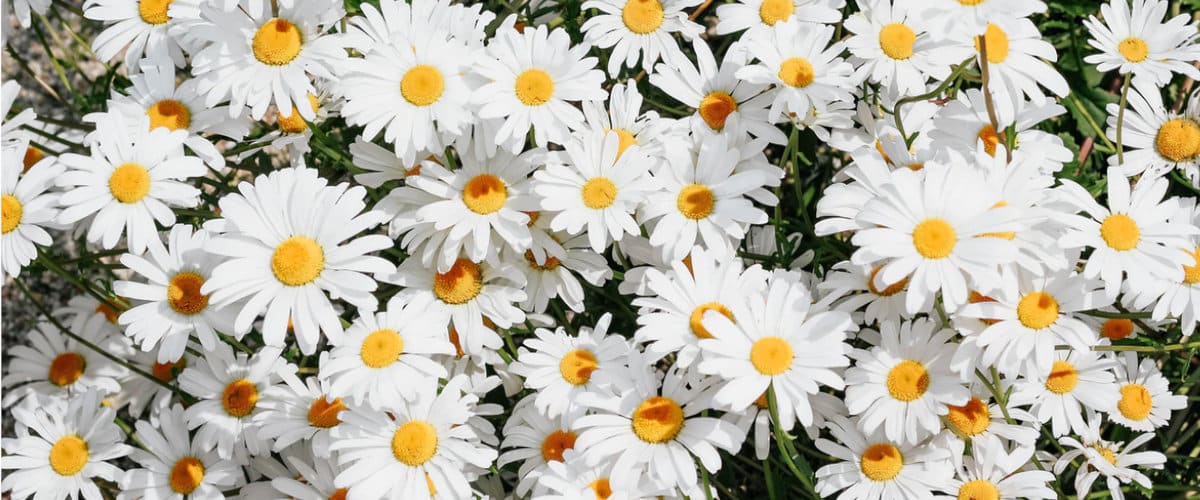
If we were made to describe a daisy, most of us would describe a plant similar to the one on the cover with green foliage, white petals, and a yellow or orange center. However, this is only one of the many species of daisies that exist. We talk today about four types of daisies to give color to the garden, since it would be impossible to talk about all of them.
The daisies that we have chosen today are easy to recognize. They are very popular so it is likely that you know them even if you are not able to name them. They present different coloration in their petals, although in some of them they are not these but the flower bud that is the most striking. Get to know them and don't hesitate to use them later to give color to your garden.
Daisy Shasta
Leucanthemum Superbum, as it is technically known, is a very popular herbaceous plant whose image we quickly associate with that of the daisy. With dark green foliage and a generous flowering which is visible from early summer to early fall, is very popular in our gardens.
Very easy to grow They are a great option for borders always in small groups to achieve a greater impact. They grow in full sun and in fertile, well-drained, slightly moist soil, although they tolerate drought well. Even light frosts are very resistant!
remove the flowers once they wither and they will grow back. In late winter, before they sprout again, remove dead foliage and do a light pruning to shape.
Purple coneflower
This type of daisy stands out for its characteristics saturated purple flowers and its prominent orange central button. It can reach up to a meter in height and can flower from mid-summer to winter. It attracts butterflies and bees so it has a pollinating function.
Thrives in full sunIt tolerates drought, heat and humidity. It only requires well-drained soils. They are ideal to give color to the garden but also to your home as a cut flower. In addition, it is known for its medicinal use, since it contributes to increasing defenses, especially in the treatment of infections in the respiratory system.
rudbeckia
The rudbeckia is a very striking perennial plant due to the combination of its bright yellow flowers and its chocolate brown center. It is also characterized by its colors by the shape of its decumbent petals, which unfold downwards, revealing the cone-shaped floral head.
They have one prolonged flowering if they are exposed to the sun and are not very demanding. They do not like very wet soils so you will have to ensure good drainage. It is very easy to grow and like the previous ones it is easily propagated by seeds. There are different subspecies that can grow up to 2 meters.
felicia amelloids
Native to South Africa, Felicia amelloides is characterized by the peculiar blue of its petals. It is a rounded perennial subshrub that reaches heights of up to 50 cm and flowers throughout the summer, although it decreases in the middle in very hot areas.
Its flowers are smaller than that of the types of daisies mentioned so far, these rising above the dark foliage. It likes the sun and is resistant to wind and drought. It requires regular watering during the summer but does not tolerate waterlogging.
You can place them both in borders in front of other taller bushes, and in large planters both in gardens like on terraces. It does not like frost so remember to protect it in winter if it occurs in your area.
You will have no trouble finding these four types of daisies in your nursery. Let yourself be advised in these to do, depending on the climate and the place where you want to plant them, a good choice. Perhaps this year it is too late to act but do not hesitate to point out those plants that you like to add them to your garden last winter.



